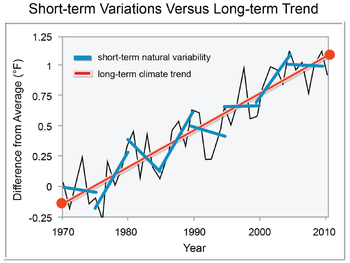The
modern evolutionary synthesis is a 20th-century union of ideas from several
biological specialties which provides a widely accepted account of
evolution. It is also referred to as the
new synthesis, the
modern synthesis, the
evolutionary synthesis,
millennium synthesis or the
neo-Darwinian synthesis.
The synthesis, produced between 1936 and 1947, reflects the consensus about how evolution proceeds.
[1] The previous development of
population genetics, between 1918 and 1932, was a stimulus, as it showed that
Mendelian genetics was consistent with
natural selection and gradual evolution. The synthesis is still, to a large extent, the current
paradigm in evolutionary biology.
[2]
The modern synthesis solved difficulties and confusions caused by the specialisation and poor communication between biologists in the early years of the 20th century. At its heart was the question of whether Mendelian genetics could be reconciled with gradual evolution by means of natural selection. A second issue was whether the broad-scale changes (
macroevolution) seen by palaeontologists could be explained by changes seen in local populations (
microevolution).
The synthesis included evidence from biologists, trained in genetics, who studied populations in the field and in the laboratory. These studies were crucial to evolutionary theory. The synthesis drew together ideas from several branches of biology which had become separated, particularly
genetics,
cytology,
systematics,
botany,
morphology,
ecology and
paleontology.

